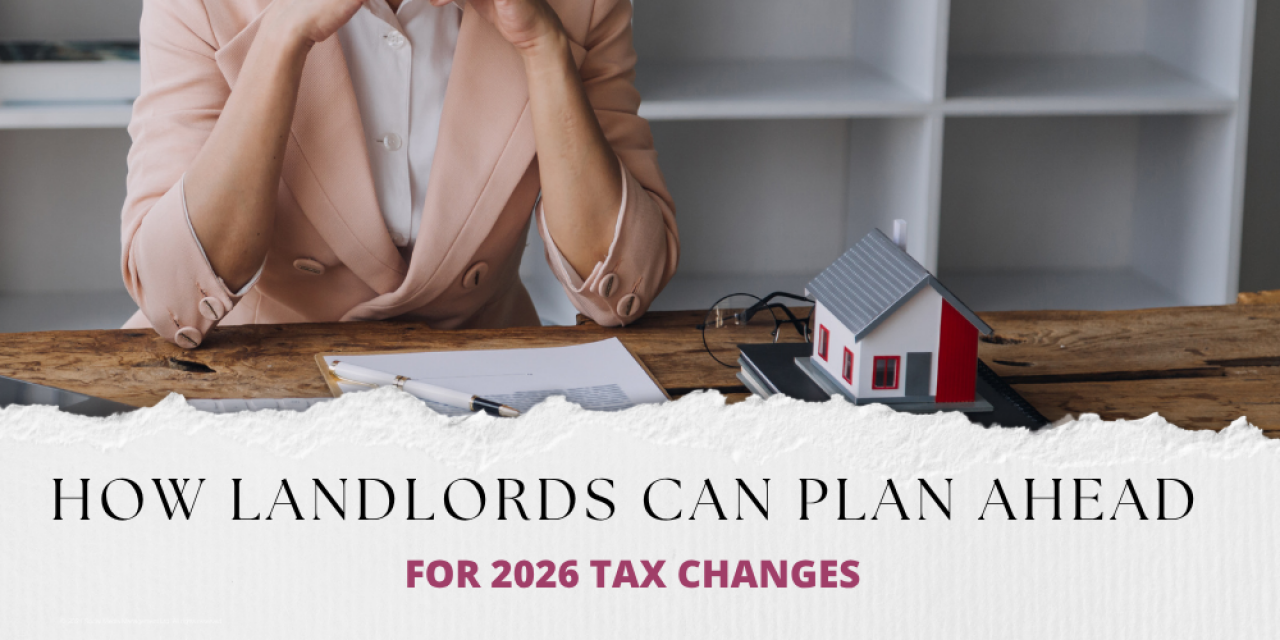As 2026 approaches, landlords across the UK are preparing for a new wave of financial and legislative changes that could impact how property income is managed and reported. Whether you own a single buy-to-let or a growing portfolio in [Location], understanding what’s on the horizon - and planning ahead - will help you stay compliant and protect your profits.
Understand the upcoming tax landscape
The 2025-2026 financial year is expected to bring a number of updates to landlord taxation. While full details are still emerging, there are several key areas to watch:
Making Tax Digital (MTD) for Income Tax: From April 2026, landlords earning over £50,000 annually will be required to submit quarterly tax returns digitally. This means traditional paper records will no longer be accepted.
Capital Gains Tax (CGT) allowances: The tax-free allowance for CGT has already been reduced in recent years, and further changes could affect landlords planning to sell properties. Timing a sale strategically could make a big difference to your bottom line.
Mortgage interest relief and allowable expenses: Understanding what you can and can’t claim as an expense remains vital, especially as operating costs and interest rates fluctuate.
Keeping informed about these areas ensures you can adapt quickly - rather than react under pressure at the end of the financial year.
Digitise your tax and record-keeping
With Making Tax Digital set to become mandatory, now is the perfect time to embrace digital bookkeeping. Cloud-based accounting software such as Xero, QuickBooks, or FreeAgent can simplify everything from rent tracking to expense categorisation.
Digital systems also make it easier to work alongside your accountant, who can access your records in real time and flag opportunities for savings or efficiency. For landlords North Oxfordshire and South Northants, using technology to stay ahead of HMRC’s digital requirements will prevent compliance issues and make end-of-year submissions far less stressful.
Review your property portfolio and financial strategy
Tax planning isn’t just about paying what’s owed - it’s about maximising what you keep. Review your buy-to-let portfolio before the end of the year to identify potential improvements or adjustments.
Could you remortgage for a better rate?
Are you making full use of all allowable deductions, such as maintenance, insurance, and agent fees?
Is it time to consider incorporating your portfolio or adjusting ownership shares for tax efficiency?
An annual financial review can reveal ways to reduce liabilities and improve profitability. Partnering with a property accountant who understands both local market trends in North Oxfordshire and South Northants and national legislation is a smart move for any landlord looking to stay ahead.
Build a contingency for tax and maintenance costs
With new regulations, energy efficiency requirements, and property maintenance costs rising, it’s wise to build a financial buffer. Setting aside funds now can prevent unexpected bills from disrupting your cash flow later - particularly when dealing with winter maintenance or unexpected repairs.
Stay informed, stay compliant, stay profitable
The property landscape is always evolving, but early preparation helps landlords stay in control. By digitising records, reviewing your finances, and keeping up to date with HMRC’s requirements, you’ll enter 2026 confident and compliant.
For landlords in North Oxfordshire and South Northants, forward planning isn’t just about avoiding tax headaches - it’s about ensuring your property investment continues to deliver strong returns, whatever the year ahead brings.






Share this with
Email
Facebook
Messenger
Twitter
Pinterest
LinkedIn
Copy this link